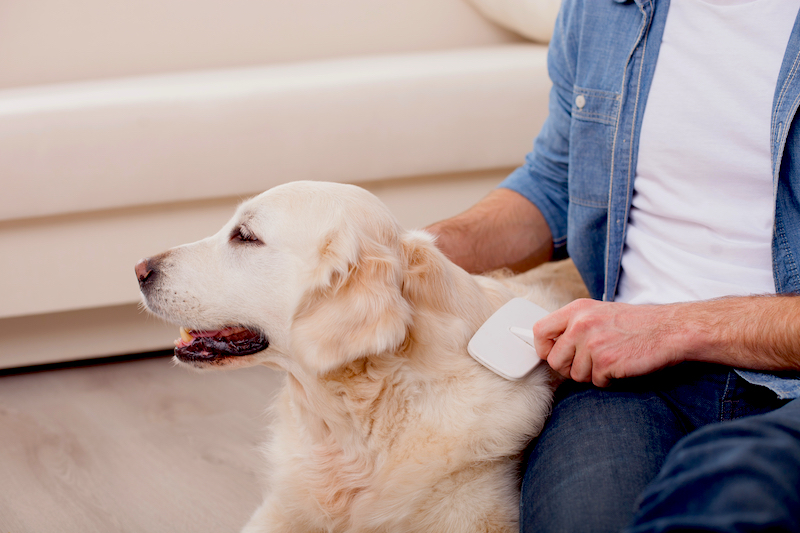Most, if not all, dogs can benefit from regular grooming at home. This is in addition to the monthly or bi-weekly full groom which includes a bath, ear cleaning, nail trimming and so on. Keeping your dog’s coat clean, shiny, and healthy will not only make her feel better, but will also help keep her coat healthy and reduce shedding. Depending on the type of coat, your dog may require monthly, weekly, or even daily brushing, so find out what is needed for your breed, and develop a routine.
Bristle Brush
The bristle brush has a few different varieties, but in general it is the brush that will work for most types of coats. The two main types of bristle brush are ones with long bristles with wide spacing, and short bristles with a higher density. The long bristle brush is ideal for long coats, while the short bristled brush is best for short coats.
Pin Brush
The pin brush has widely spaced bristled, which in some cases have rubber or plastic pin tips. The pin brush is great for long, flowing, and delicate coats, but is ideally suited for curly coats.
Slicker Brush
The slicker brush is for most coat types but is designed to help remove tough tangles and knots. The fine wire bristles of the slicker brush make it a great option for de-matting.
Basic Comb
The basic dog comb is designed to help your dog’s coat have a finished look. It comes in many varieties, specially designed for different coat types. Use the comb to finish the grooming process by removing tangles and extracting lose hair.
Shedding Blade
As dogs shed, the loose fur can be come tangled in their coat, so a shedding blade can help reduce this problem. The shedding blade is available for different coat types, and helps remove not only loose fur, but also undercoat.
Developing a grooming and brushing routine for your dog can not only help keep her coat healthy and shiny, but also provide a bonding opportunity with her.

